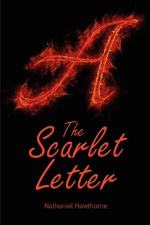|
|
The Scarlet Letter Chapter 24
After the excitement, the townspeople have differing ideas of how what they saw on Arthur Dimmesdale's chest came to be. They saw the scarlet letter "imprinted in the flesh." Some thought Dimmesdale had inflicted the torture upon himself, some felt that Roger Chillingworth had caused it to appear with the aid of his magic and herbs. Still others felt "that the awful symbol was the effect of the ever-active tooth of remorse, gnawing from the inmost heart outwardly, and at last manifesting Heaven's dreadful judgment by the visible presence of the letter." Chapter 24, pg. 234. Finally, a few spectators continue to claim that they saw nothing at all, and that the minister had said nothing to imply his guilt in any way. Instead, they say he turned to Hester, "a fallen woman", to emphasize the unattainable nature of human righteousness.
After the townspeople's responses, Roger Chillingworth is described. His entire demeanor changes after Dimmesdale's death. His vitality is gone, because the subject of his revenge - and life's work - is dead. Roger Chillingworth dies within the year, and bequeaths a large amount of property in Europe to Pearl Prynne. Soon after Chillingworth's death, Pearl and Hester disappear. Years later, Hester returns alone to the preserved cottage on the peninsula. She receives lavish gifts and letters with armorial seals from far-away places, possibly from a lover. No one knows for sure where Pearl has gone, though Hester is seen sewing an opulent baby's gown definitely not meant for a Puritan household.
Hester becomes a valued counselor to many women. "Hester comforted and counseled them as best she might. She assured them, too, of her firm belief, that, at some brighter period, when the world should have grown ripe for it, in Heaven's own time, a new truth would be revealed, in order to establish the whole relation between man and woman on a surer ground of mutual happiness." Chapter 24, pg. 239. Hester dies many, many years later, and "a new grave was delved, near an old and sunken one, in that burial-ground beside which King's Chapel has since been built. It was near that old and sunken grave, yet with a space between, as if the dust of the two sleepers had no right to mingle. Yet one tombstone served for both." Chapter 24, pg. 239.
The tombstone reads: "On a Field, Sable, the Letter A, Gules." Chapter 24, pg. 240. Sable is black, Gules is the traditional name for red in heraldry.



